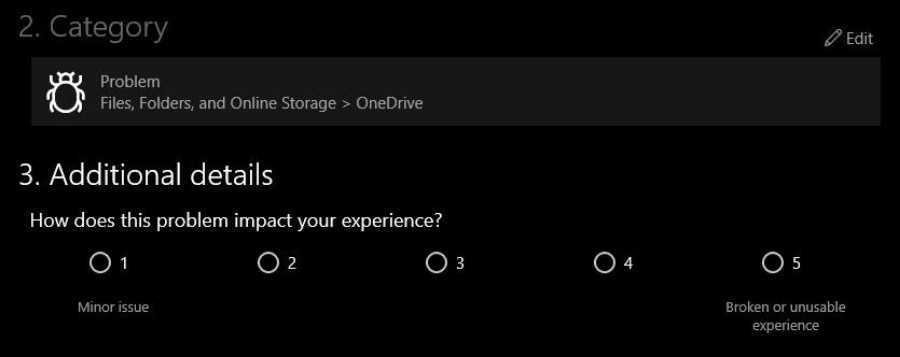In September 2017, Microsoft boasted that it had just released the "best version of Windows 10 ever released".
A year later, Windows developers have fallen on the latest version of the operating system to collect unwanted. Today we could say that October 2018 Update is the worst version of Windows 10 ever released.
The month began triumphantly for Microsoft, with the announcement of the new version on October 2, the second version of Windows 10 of the year, 1809. The company managed to make it available to the public according to the timetable. A few days later, the company made it unprecedented: Get caught October 2018 Update from its servers to investigate a serious data erase error.
Later other bugs were added to the list, the built-in support for Zip files not working properly, some HP devices were showing BSOD, some system fonts were not showing up. Intel released the wrong one program οδήγησης ήχου μέσω του Windows Update, και η φωτεινότητα της οθόνης των φορητών υπολογιστών επαναφέρεται αυθαίρετα.
So we arrived almost November and October 2018 Update is still growing.
What went wrong; Various analysts such as ZDNet's Mary Jo Foley report that Microsoft is focusing on new features to the detriment of its core principles. His Peter Bright Ars Technica, argues that the Windows development process is completely flawed.
Or maybe there is a simpler explanation.
I suspect that much of the responsibility comes under Microsoft's overwhelming support to one of the greatest leaderships of the last half century:
"Everything that is measured is done" by "What gets measured gets done." The motto is definitely a good guiding principle for every business, but there is also a trap for every manager who does not consider what is not measured.
Let's explain it.
In Windows 10, a huge number of performance and reliability events are constantly measured on each Windows 10 computer by telemetry, but also by Insiders. It is now known that Microsoft uses telemetry data to improve the basic elements of Windows 10.
In an announcement in September 2017 on the company blog, Microsoft states with exact numbers that it improved battery life by 17% in Microsoft Edge, made boot by 13% faster and saw an 18% reduction in users having "certain system stability issues ”. All of this data shows a much more reliable system, as measured by a dramatically reduced volume of calls to Microsoft support lines:
Our internal customer support groups report significant reductions in the volume of support requests after the Anniversary Update. During this time, we saw a healthy reduction in monthly support volumes.
Microsoft has focused with caution σε αυτά που μπορεί να δει στον πίνακα control της τηλεμετρίας, παρακολουθώντας τις μετρήσεις στα ποσοστά επιτυχίας εγκατάστασης, τους χρόνους εκκίνησης και τον αριθμό των αιτημάτων υποστήριξης. Με αυτά τα μέτρα αξιοπιστίας και απόδοσης, τα Windows 10 είναι αναμφισβήτητα πολύ καλύτερα από οποιονδήποτε προηγούμενο λειτουργικό σύστημα.
Unfortunately, with this focus the company seems to have lost sight of the "soft errors", when everything looks very good on the telemetry instrument panel and every action by the user returns a success, even when the result is anything but successful. .
Telemetry is much more effective in collecting data to diagnose the conditions. It gives feedback to developers who want to improve the performance of Windows applications and functions, and can do a great job of locating third-party drivers that are not behaving properly.
But telemetry fails to detect an error that does not crash the system or some unquestionable failure. In theory, these issues are highlighted by Windows Insider members in the Feedback Hub. Indeed, there have been too many bug reports from Windows Insider members, they pointed out the problem of data deletion, but also the problem with Zip files.
So why did these references disappear? If you've visited the Feedback Hub, you'll know that the quality of the reports varies. Too many reports added on a daily basis are variants of previous ones. Others are asking for new features.
So recently, Microsoft brought a new field to the Feedback Hub bug reporting tool, which adds an indication of the severity of a problem.
Windows users can now report problem reports according to their severity.
Will it work better? It will look in the future. But we should mention that even with this change, doesn't solve a very fundamental problem of the Windows Insider Program: Members aren't trained to test software. They are not professionals.
An experienced software controller might have identified these issues. A good tester knows that testing is extremely important. On the other hand a developer who is hurrying to check the code to be within the six-month schedule is almost certainly not going to consider every chance.
Sometime in the next few days, Microsoft will be releasing the October 2018 Update again and everything will come back to the normal Windows-as-a-service world. But April comes, and 19H1 is approaching public circulation.
______________
BSOD: 20 years of blue screen life and the most famous WHOA





